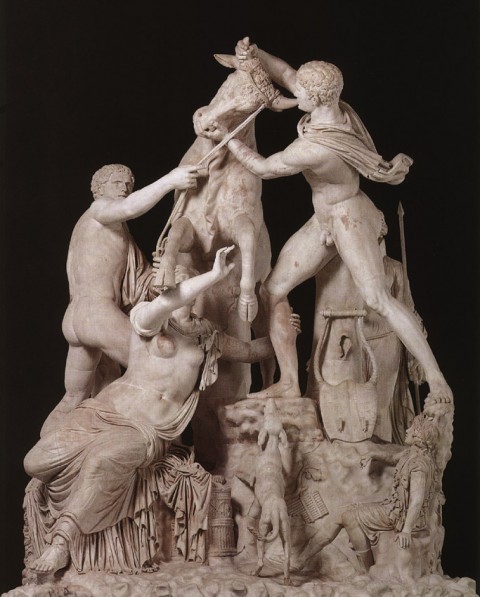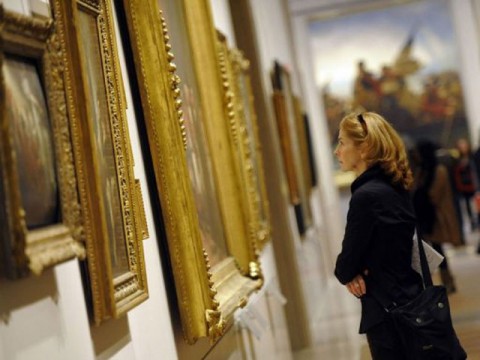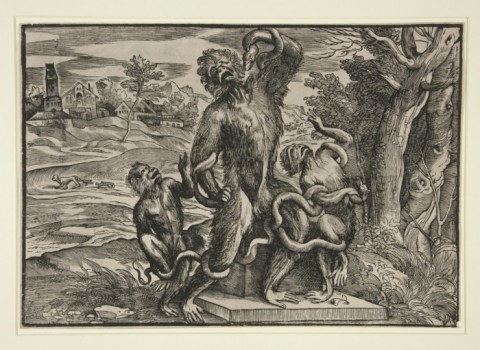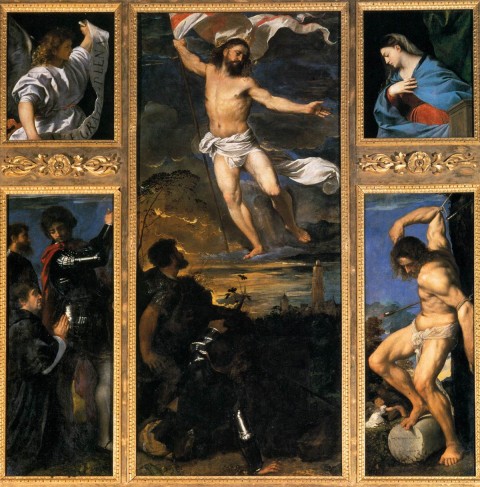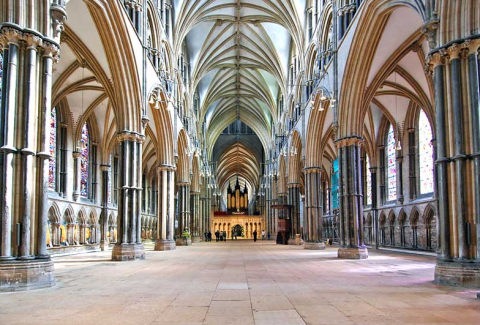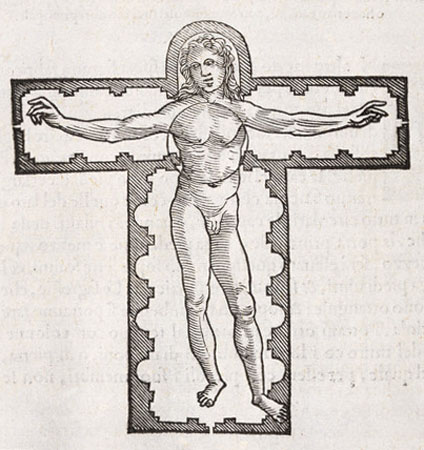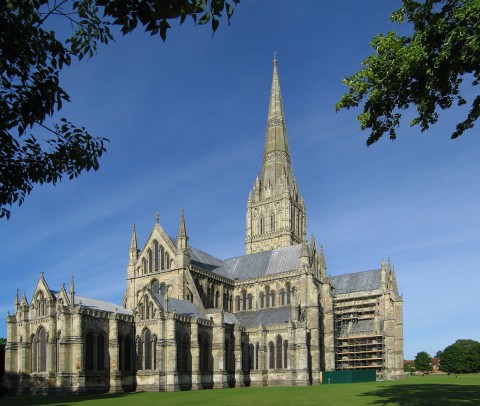Monday, September 24th, 2012
The Farnese Bull and Messy Art History
Although I’m not a specialist in Hellenistic or Roman sculpture, I like to feel like I am pretty savvy regarding the major works of art from these periods. Up until earlier this year, however, I was not familiar with the “Farnese Bull” (shown above). This sculpture, which was excavated in 1545, was soon placed in the Palazzo Farnese as part of the collection of Pope Paul III (formerly Cardinal Alessandro Farnese).
At almost 12 feet (3.7 m) in height, this sculpture has a dominating presence. In fact, the complex composition and large scale made me wonder why I hadn’t seen this work of art in more art history textbooks. Although I have since learned of a few sources which discuss this book (including a great entry in Haskell and Penny’s Taste of the Antique), I still think that this work is underrepresented in art history textbooks geared for college students. And, after doing some research, I think I have figured out why this book isn’t discussed in more: the subject matter, history, and historical reception of this piece are really complex and messy. Taking my cues from Haskell and Penny’s entry, I thought I would outline a few things to prove my point:
- Subject matter: It is hard to concretely say what is being represented in this piece. The Farnese inventory (of 1568) describes this piece as “the mountain with the Bull, and four statues around it.” Vasari tried to take things further and described this piece as a Labor of Hercules. Others believe that this sculpture represents the story of Dirce, the wife of Licus. Dirce hated her niece Antiope and tried to have her killed. However, Antiope’s sons intervened and tied Dirce to a wild bull as punishment.
- Ancient history: It is hard to date this piece. Scholars still debate whether this piece, which was excavated at the Baths of Caracalla, is a Roman copy or an original Hellenistic copy. Some scholars argue that this sculpture was specifically made for Caracalla’s baths (as a Roman copy). Scholars also disagree as to whether this was the work of art that was described by Pliny the Elder: the statue doesn’t quite match the descriptions of a statue which was brought to Rome during the time of Augustus.
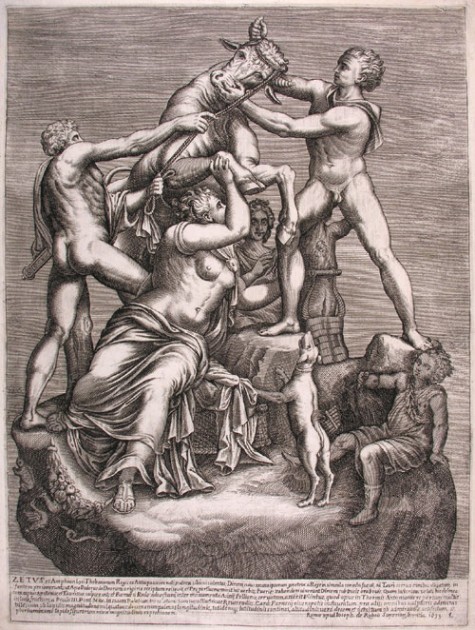
Anonymous Artist "CL", The Farnesian Bull, 1633. Etching.
- Renaissance and Baroque history: It is clear that the Farnese Bull underwent some restorations after excavation, and they may have been completed by Michelangelo and his students (similar to the restorations of the “Farnese Hercules”). The “Farnese Bull” became very well-known in the Renaissance and afterward, popularized in part by prints (see etching above). Federico Zuccaro said that this was “the most remarkable and marvelous work of the chisel of the ancients” In fact, the ostentatious Louis XIV tried to acquire the piece in 1665!
- Criticisms of the work: Despite the original praise for this piece, the “Farnese Bull” began to receive criticism in the 17th and 18th centuries for its lack of quality. Bernini noted that the sculpture was only well-known because it was carved from a single piece of stone and created on a large scale. Other criticisms were more pinpointed. The Richardsons noted, for example, that the rope was of “poor quality.” Edward Wright felt like Dirce’s face was “quite without Passion.” Although Winckelmann was also dismissive of the work, although he did note that the extensive restorations have affected the many opinions regarding the piece.1
So, despite the high praise that this work of art experienced in the Renaissance period, it doesn’t seem to have gotten a lot of attention today from art history textbooks. Is it too difficult for textbooks to introduce “messy” situations to undergraduate students? Perhaps it is tricky at times, but I also think that students are bright enough and capable enough to grasp the complexity of art history. In fact, I think it’s good for them to realize how art history is a compilation of various opinions that have built up over time. (It seems like the omission of this sculpture in art history books is an indication of what is and is not valued today in art history.) I also think that it is a good idea to introduce issues of “quality” to students, so they can think about how the concept of quality is a construct.
Has anyone seen the “Farnese Bull” or one of its copies? What was your opinion of the piece? Also, has anyone seen the “Farnese Bull” treated at length in a traditional (and relatively recent) art history textbook for college students?2 I’d be interested to see how this sculpture is treated in such a text, if it exists. Haskell and Penny’s catalog is great as a scholarly resource, but I’m not sure if it is very practical as a textbook for a college course.
1 Francis Haskell and Nicholas Penny, Taste and the Antique: The Lure of Classical Sculpture, 1500-1900 (New Haven: Yale University Press, 1982), 165-167. Citation available online HERE.
2 I did find one online academic source which discusses the Farnese Bull at length, but quotes an art history textbook by Gisela M. A. Richter which was written in 1930!
